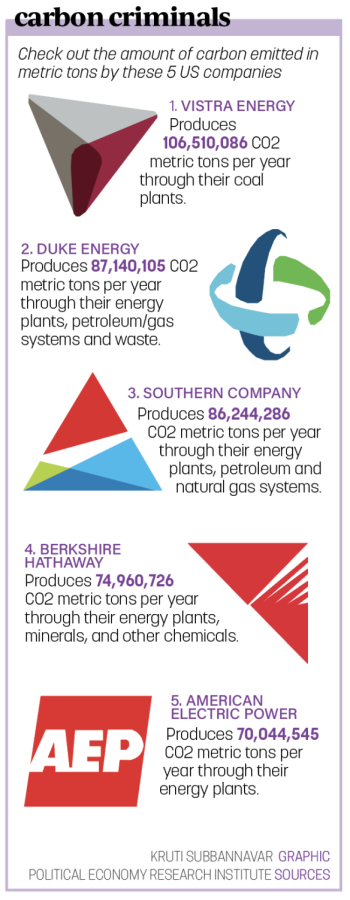For as long as I can remember my parents have been telling me to eat my whole plate and to not be wasteful because they pay a lot of money for the food. Or that some child in a distant country is starving and I am not. This has resulted in me taking what I need during meals and trying not to waste excess. However, the free lunch program, which this school implemented last year and has con`tinued through this year, has complicated that habit, as now wasting food or spending more money becomes a choice. To clarify a person’s school lunch to be free it has to meet certain dietary criteria, which includes taking a fruit or a vegetable.
Without the fruit or vegetable, a student lunch will not be discounted. While in theory this requirement means students will eat healthier foods, in practice it ends creating more food waste as students take food they don’t want. Certainly the disproportionate number of students taking fruit or vegetables and not eating then skews the cafeteria’s production records. This in turn, leads to more produce being ordered because of a distorted statistic. The problem is not with cafeteria management or the students themselves, but with the policy. Requiring students to take unwanted fruits or vegetables not only generates more food waste but costs the school more money. It costs the students who choose to opt out of the free lunch program in school, choosing less lofty alternatives. The program doesn’t make sense. Why should students have to pay if they opt to get only the main entree portion without the fruit of veggie? There simply is no reason to monetize less food than what meets the criteria. After all, students’ dietary needs and habits vary widely from athletes who need bigger portions to vegetarians and vegans, who have different needs and everything in between.
With all this being said should the free lunch program continue, it’s time to make adjustments to it. Not only will these changes save money, they may also help the environment by reducing the amount of food waste. Though the free lunch program is bigger than simply Carmel and adjusting the policy may be beyond CHS’s reach, we can at least make efforts to identify what fruits and vegetables are actually being eaten. This way, we do not have to waste money on what will be thrown away.
To view more of Arya Pinnamaneni’s work, click here.


































![British royalty are American celebrities [opinion]](https://hilite.org/wp-content/uploads/2024/03/Screenshot-2024-03-24-1.44.57-PM.png)


















![Review: “Suits” is a perfect blend of legal drama and humor [MUSE]](https://hilite.org/wp-content/uploads/2024/04/unnamed-1.png)
![Chelsea Meng on her instagram-run bracelet shop [Biz Buzz]](https://hilite.org/wp-content/uploads/2024/04/IMG_2446-1200x838.jpg)
![Review: Quiet on Set: The Dark Side of Kids TV is the long awaited exposé of pedophilia within the children’s entertainment industry [MUSE]](https://hilite.org/wp-content/uploads/2024/04/unnamed.jpg)
![Review: “The Iron Claw” cannot get enough praise [MUSE]](https://hilite.org/wp-content/uploads/2024/04/unnamed.png)
![Review: “The Bear” sets an unbelievably high bar for future comedy shows [MUSE]](https://hilite.org/wp-content/uploads/2024/03/unnamed.png)
![Review in Print: Maripaz Villar brings a delightfully unique style to the world of WEBTOON [MUSE]](https://hilite.org/wp-content/uploads/2023/12/maripazcover-1200x960.jpg)
![Review: “The Sword of Kaigen” is a masterpiece [MUSE]](https://hilite.org/wp-content/uploads/2023/11/Screenshot-2023-11-26-201051.png)
![Review: Gateron Oil Kings, great linear switches, okay price [MUSE]](https://hilite.org/wp-content/uploads/2023/11/Screenshot-2023-11-26-200553.png)
![Review: “A Haunting in Venice” is a significant improvement from other Agatha Christie adaptations [MUSE]](https://hilite.org/wp-content/uploads/2023/11/e7ee2938a6d422669771bce6d8088521.jpg)
![Review: A Thanksgiving story from elementary school, still just as interesting [MUSE]](https://hilite.org/wp-content/uploads/2023/11/Screenshot-2023-11-26-195514-987x1200.png)
![Review: When I Fly Towards You, cute, uplifting youth drama [MUSE]](https://hilite.org/wp-content/uploads/2023/09/When-I-Fly-Towards-You-Chinese-drama.png)
![Postcards from Muse: Hawaii Travel Diary [MUSE]](https://hilite.org/wp-content/uploads/2023/09/My-project-1-1200x1200.jpg)
![Review: Ladybug & Cat Noir: The Movie, departure from original show [MUSE]](https://hilite.org/wp-content/uploads/2023/09/Ladybug__Cat_Noir_-_The_Movie_poster.jpg)
![Review in Print: Hidden Love is the cute, uplifting drama everyone needs [MUSE]](https://hilite.org/wp-content/uploads/2023/09/hiddenlovecover-e1693597208225-1030x1200.png)
![Review in Print: Heartstopper is the heartwarming queer romance we all need [MUSE]](https://hilite.org/wp-content/uploads/2023/08/museheartstoppercover-1200x654.png)






















![Review: Ladybug & Cat Noir: The Movie, departure from original show [MUSE]](https://hilite.org/wp-content/uploads/2023/09/Ladybug__Cat_Noir_-_The_Movie_poster-221x300.jpg)

![Review: Next in Fashion season two survives changes, becomes a valuable pop culture artifact [MUSE]](https://hilite.org/wp-content/uploads/2023/03/Screen-Shot-2023-03-09-at-11.05.05-AM-300x214.png)
![Review: Is The Stormlight Archive worth it? [MUSE]](https://hilite.org/wp-content/uploads/2023/10/unnamed-1-184x300.png)




